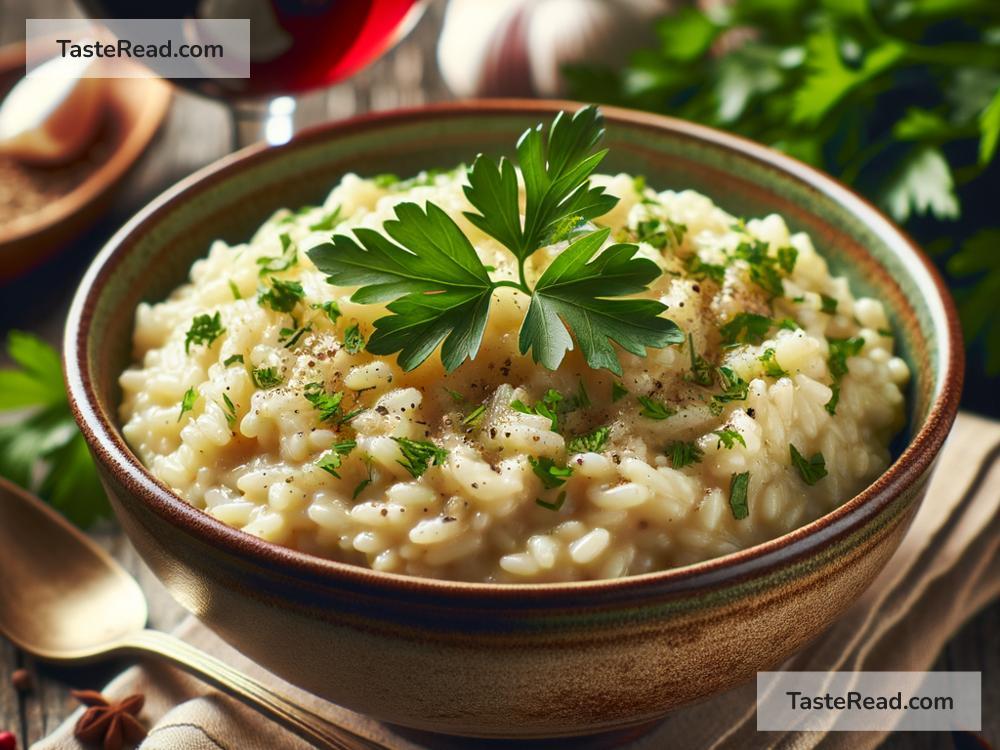How the Italian Risotto Became a Symbol of Northern Italy
Italian cuisine is famed across the globe for its delicious flavors, varied dishes, and its incredible ability to tell a story about its origins. One dish that stands out in this rich culinary tapestry is Risotto. This creamy, comforting rice dish has become a symbol of Northern Italy, representing the region’s culture, history, and adherence to tradition. But how did Risotto rise to such prominence? In this post, we’ll dive into the history, preparation, and regional variations that make Risotto so special.
The Roots of Risotto
To understand why Risotto is synonymous with Northern Italy, we need to look at the geography and climate of the region. Northern Italy, with its cooler temperatures and fertile plains, is ideal for growing rice. This wasn’t always the case, though. Rice was introduced to Italy sometime between the 13th and 14th centuries, most likely through trade with Asia and the Middle East. It found a perfect home in the Po Valley, a major agricultural area. Farmers in Lombardy, Piedmont, and Veneto quickly discovered that the local climate and water supply were ideal for cultivating this new crop.
Risotto, as a dish, began to take shape in the 1800s. It combined the locally grown rice with the cooking techniques and ingredients available in Northern Italy, such as butter, Parmesan cheese, and saffron, which gives Risotto alla Milanese its golden color. The dish quickly became popular among the people of Northern Italy, not only for its delicious flavor but also because it was a hearty meal that could feed a family relatively cheaply.
The Traditional Preparation
At its core, Risotto is a dish that requires patience and attention to detail. The process begins with sautéing onions in butter or olive oil. Then, the rice is added and toasted slightly until it becomes translucent. This step is crucial as it helps the grains absorb flavors better. Next, warm broth (usually chicken, vegetable, or beef) is added gradually, allowing the rice to cook slowly and release its starch, giving Risotto its characteristic creamy texture.
What makes Risotto uniquely Northern Italian, however, is not just the technique, but also the ingredients. The use of Arborio, Vialone Nano, or Carnaroli rice, all of which are varieties grown primarily in the North, and local cheeses like Grana Padano or Parmigiano-Reggiano, adds to its regional authenticity.
Regional Variations
While Risotto is a distinctly Northern Italian dish, it is not a monolith. Each region and, indeed, each cook, has their own variation. For instance, Risotto alla Milanese, one of the most famous versions, comes from Milan and is known for its luxurious use of saffron. Moving to Veneto, you might find Risotto al nero di seppia, which includes cuttlefish and its ink, giving the dish a dramatic black color and a rich, seafood flavor.
These variations are a testament to the versatility of Risotto and the way it has woven itself into the fabric of Northern Italian cuisine. They also highlight the local flavors and ingredients, making each version a reflection of the area’s culinary history.
A Symbol of Northern Italy
Risotto’s journey from a farmer’s meal to a symbol of Northern Italian cuisine is a story of regional pride, culinary innovation, and adherence to tradition. It represents the rich agricultural history of the Po Valley, the skill of the region’s cooks, and the time-honored methods passed down through generations.
Moreover, Risotto embodies the Italian principle of “cucina povera” or making do with what you have. Its origins as a dish that maximized local resources have evolved into a culinary tradition that celebrates regional identity. Whether it’s the golden hue of Risotto alla Milanese or the rich flavors of a seafood Risotto from Veneto, each dish tells a story of its origins.
In the end, the significance of Risotto to Northern Italy can be seen in its continued popularity, both within Italy and abroad. It’s not just a dish; it’s a cultural artifact, a piece of culinary history that continues to bind communities and celebrate regional specialties. Risotto’s status as a symbol of Northern Italy is well deserved, paying homage to the country’s rich culinary tradition and the beautiful simplicity of cooking with local, seasonal ingredients. Whether enjoyed in a humble kitchen or a fine dining establishment, Risotto remains a cherished emblem of Northern Italian culture.


